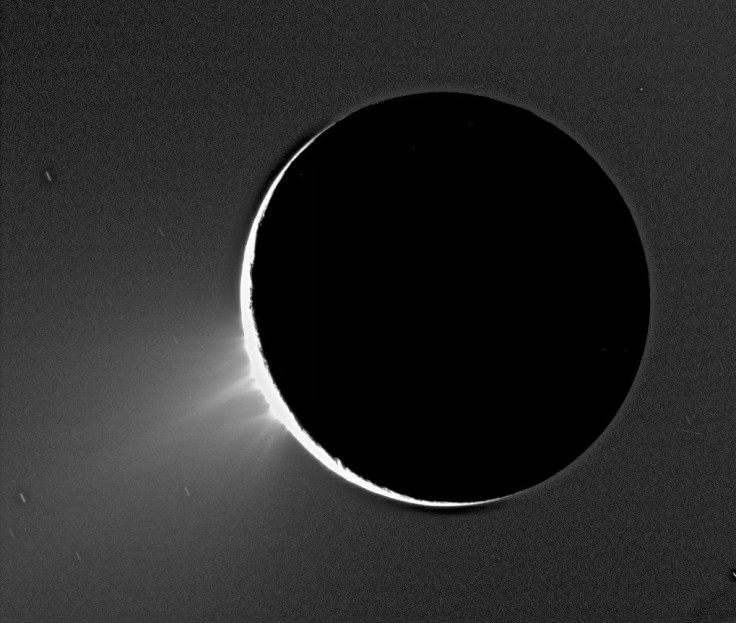Enceladus life-hunting mission: To deliver Saturn moon’s ocean samples to Earth

Samples from Saturn moon’s ocean would soon be delivered to Earth through a spacecraft, for scientists to analyse materials for signs of life. Experts are currently developing a mission concept to explore the south polar region of Saturn's ice-covered moon Enceladus, with a probe equipped to study the samples from the plume emitted by the moon.
The mission, called Life Investigation for Enceladus, or LIFE, aims to collect samples without landing on the surface of Enceladus and to deliver it back to Earth through a return capsule. The plumes are made up of water, salts and organic compounds blasted from the subsurface ocean of the moon out into space.
Aside from Saturn’s moon, scientists are also planning to explore the much larger Jupiter moon Europa. Many experts believe that the two satellites are the best bets to host life beyond Earth within the solar system.
Recent studies suggest that both Enceladus and Europa appear to have subsurface oceans of liquid water and as these oceans, being beyond the reach of sunlight, may possibly harbour energy sources enough to sustain microbial life.
To date, NASA has already approved a flyby mission to Europa, which may launch in the early to mid-2020s. However, the LIFE mission has not yet been considered for the agency’s future list of projects, Space.com reported.
But LIFE leader Peter Tsou, from the Sample Exploration Systems in La Canada, California, said that "getting a sample from Enceladus would be phenomenal." Many scientists are pushing for the mission as the Saturn-orbiting Cassini spacecraft has proven the moon has geysers that form plumes out into the space, however, it was not equipped for analysing life materials by the time.
Returning samples to Earth from the Saturn moon’s ocean may shed light to the “are we alone?” question of everybody, Tsou said. In addition, the process of analysing the alien material would be easy as current laboratories can provide “the ultimate in analytical capability, adaptability, reproducibility, reliability and synergy amongst scientists,” he added.
Tsou said the LIFE mission would launch a probe to Saturn orbit that may take seven to eight years without such a gravity-assist manoeuvre. After the probe has collected the plume material, a return capsule containing the samples would be sent back to Earth immediately.
Tsou noted that the material should be handled carefully once delivered on Earth, as it could harbour alien lifeforms. These lifeforms may theoretically harm or alter Earth life and ecosystems, according to Space.com.
The samples will likely be stored and studied in a facility capable of "biosafety level 4" (BSL-4) containment, Tsou said. BSL-4 has already been used to study extremely contagious and dangerous infectious agents like Ebola virus.
As there is no available BSL-4 facility in the United States to handle material from space, Tsou said that the Japan Agency for Marine-Earth Science and Technology, or JAMESTEC, has responded to help store and study the Enceladus samples. The JAMESTEC has been planning to create the BSL-4 facility on its oceangoing research vessel Chikyu.
However, there are still no firm commitments for the mission. But Tsou said that he already had meetings with officials from JAXA and Japan’s Institute of Space and Aeronautical Science.
Contact the writer at feedback@ibtimes.com.au or tell us what you think below




















